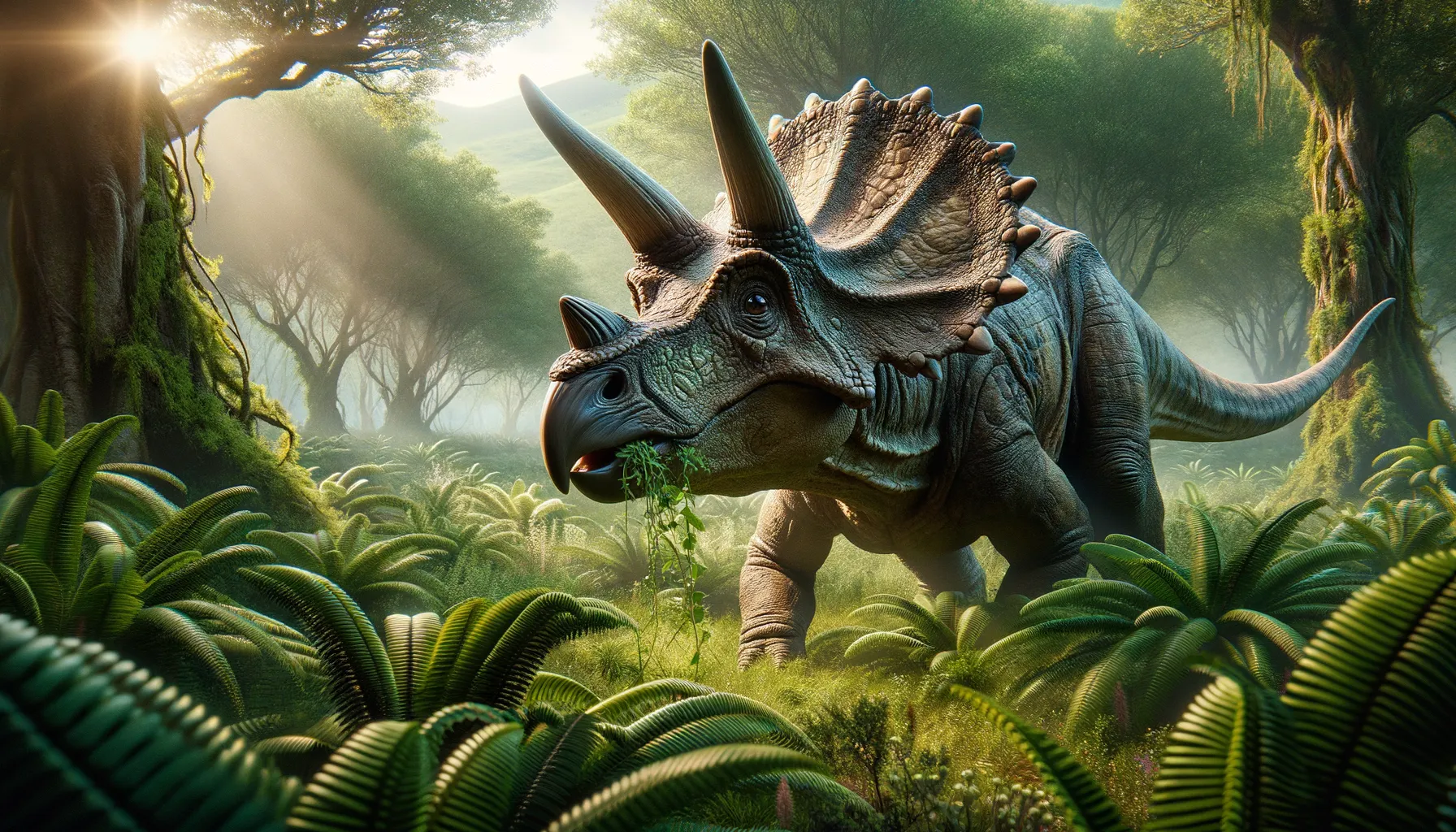
Protoceratops
The frilled vegetarian of the ancient desert.
Period
Cretaceous
Length
Measured approximately 6 feet in length.
Height
Stood about 3 feet tall at the shoulders.
Weight
Protoceratops weighed around 400 pounds.
Protoceratops was a small ceratopsian dinosaur known for its beaked face and frilled neck. Living during the Cretaceous period, it was primarily herbivorous, feeding on the lush vegetation of its environment. Fossils of Protoceratops are primarily found in the Gobi Desert, and these discoveries have provided essential insights into ceratopsian development and social behavior. Despite their small size, Protoceratops’ physical features, such as its frill and strong beak, were distinctive.
Diet
Protoceratops was a herbivore, primarily feeding on plants. It is believed to have fed on leaves, stems, and other accessible vegetation. The strong beak suggests it was adept at cropping tough plant material.
Hunting
Protoceratops did not hunt as it was a herbivore. Instead, it foraged for vegetation in its environment. Its behavior was more about avoiding predators rather than actively pursuing prey.
Environmental challenges
Protoceratops faced predators like Velociraptors in its habitat, requiring constant vigilance. Their relatively small size made them vulnerable to attack. Seasonal changes would have affected the availability of food sources, presenting survival challenges. Additionally, they needed to efficiently extract nutrients from tough vegetation.
Speed
Protoceratops moved slowly on four legs.
Lifespan
Estimated to live for about 10-15 years.
First discovery
First fossils discovered in the Gobi Desert in 1923.
Fun Facts
- Protoceratops was a small, sheep-sized dinosaur that lived around 75 to 71 million years ago during the Late Cretaceous period.
- It is often called the 'sheep of the Cretaceous' because it was a common herbivore in its ecosystem, much like sheep are in modern times.
- Protoceratops had a distinctive frill on the back of its head, which scientists believe was used for display, species recognition, or protection.
- Unlike its larger relatives like Triceratops, Protoceratops did not have horns on its face.
- This dinosaur's fossils have been found mostly in Mongolia, providing rich insights into the Cretaceous period of Asia.
- Protoceratops is famous for the discovery of its preserved eggs, which gave scientists valuable information about dinosaur nesting behavior.
- In one remarkable fossil find, a Protoceratops was discovered locked in combat with a Velociraptor, capturing a dramatic moment in prehistoric life.
Growth and Development
Protoceratops experienced steady growth throughout its life, starting from hatchlings that were quite vulnerable. Juveniles likely stayed in groups for protection, gradually venturing further as they grew. The frill, a notable feature, developed as they matured, possibly serving functions in defense and mating. Fossil evidence suggests a relatively uniform growth pattern among individuals.
Habitat
Protoceratops lived in what is now the Gobi Desert, a region characterized by arid conditions. During its time period, the area would have had river valleys providing necessary water and plant life. The landscape was likely a mix of open plains and vegetated areas, allowing for both grazing and concealment. Seasonal climate variations probably required adaption and resilience.
Interaction with other species
Protoceratops coexisted with predators like Velociraptors, often depicted in fossilized interactions. They likely lived in herds or family groups, offering protection for the young. Their interactions with other herbivorous species might have involved competition for food resources. Social dynamics within their groups might have included hierarchical structures.
Natural lifespan
Protoceratops likely lived naturally for about 10 to 15 years.
Reproduction
Protoceratops reproduced by laying eggs, with nesting sites discovered near fossil remains. Evidence suggests they might have attended to their nests, offering some degree of parental care. Hatchlings were small and vulnerable, necessitating shelter and protection from family groups. The reproductive strategy involved laying multiple eggs to increase survival chances.
Social behaviour
Protoceratops is believed to have been social, potentially forming small herds or family groups. This social structure would have provided defense against predators. Communication through vocal and visual displays might have been common, especially involving the frill. Social interactions likely played a role in mating and establishing group hierarchies.
Fossil locations
Fossils of Protoceratops have been predominantly found in the Gobi Desert of Mongolia. These fossils have provided significant insights into their anatomy and behavior. The discovery of nests and eggs indicates areas where they might have bred and raised their young. The abundance of fossils in certain regions highlights their once-thriving populations.
